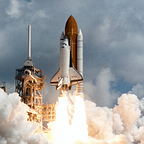Why Dust May Help Explain How Planets Are Formed
Planets are formed when a dense cloud of dust and gas spins around a newly formed star. Over time, gravity causes the bits of matter to clump together and eventually form into planets. Scientists believe that they have discovered a reason why this process tends to take a while. This hindrance is known as the bouncing barrier. Scientists have recently observed that particles over 1 millimeter in size tend to bounce off each other more than they tend to combine with one another, meaning that the forming of planets is slowed.
As time passes, particles will begin to overcome the bouncing barrier and form into larger masses that will become planets orbiting a star one day. To understand the process better, a team of researchers conducted an experiment using glass beads in place of protoplanetary dust grains. The glass beads were each a little less than half a millimeter in size. In the experiment, the researchers noticed that Earth’s gravity was having a distinct affect. To deal with this, they ran their experiment in a 120 meter tall drop tower in Bremen, Germany, moving the capsule containing the glass beads up and down repeatedly, basically making them weightless.
Before the experiment, the researchers shook all the glass beads up, acting as collisions dust grains and fragments would have over time. The shaking caused the beads to have electric charges; some positive and some negative. The electric charges acted as bonding forces between glass beads when they were weightless, causing the glass beads lump together. The conclusion of the experiment was that electric forces obviously act as bonds between particles to help overcome the bouncing barrier. There are still other obstacles in a planet’s growth, such as smaller particles colliding with larger masses of particles at high speeds, splitting them or tearing them apart. So we now know how particles overcome the bouncing barrier to form planets, but there are still many more obstacles that young planets must face.
